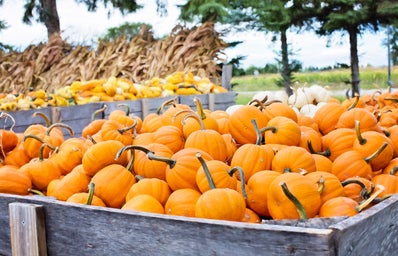The morning of October 1st always feels different.
It doesn’t matter if you’re in California or New York or Winnipeg—the 1st still has a slight crackle in the air. The wind feels a little brisker. There’s a phantom scent of apples and cinnamon that disappears as soon as you try to find the source, and the world around you seems to embrace the fact that, finally, it is fall.
And Halloween is just around the corner.
Nowadays, Halloween is a celebration involving costumes and candy—a time for eating too many sweet things, having a good time, and figuring out a costume that you haven’t worn for the past three Halloweens but that can also be made without spending anything. 2,000 years ago, however, Halloween looked a little different—starting with the fact that it was called not Halloween, but Samhain (pronounced sow-en). Samhain was a holiday celebrated by Celts—an ancient people who lived in France, Ireland, and the UK. The Celtic New Year was celebrated on the first of November, and it was the belief of the Celts that the night before the New Year was when the veil between the world of the living and the dead was thinnest—the night that the dead could return to the realm of the living.
The Celts believed that this thinning of the veil also made Samhain an excellent time for divination, or fortune-telling, and it was their tradition to celebrate by gathering around an enormous bonfire, dress in costumes made of animal furs and skins, and telling one another’s fortunes. After the celebration, each household would relight their own hearths with the bonfire’s flame, in order to usher the new year into their own homes, and to protect them during the coming winter.
By 43 AD, however, the Romans had conquered most of the Celtic territory, and were incorporating Samhain into their own traditions. In late October, they celebrated a day called Feralia, during which they commemorated those that had passed into the afterlife, and another one dedicated to Pomona, goddess of fruit and trees. Given that Pomona’s symbol was the apple, this is in all likelihood how the tradition of bobbing for apples was begun.
Today, of course, it is safe to say that no one is walking around wearing animal skins on Halloween. But there are some modern practitioners of Wicca and neo-paganism who still observe Samhain, celebrating by practicing divination and visiting their deceased loved ones. Some even honor the spirits that are said to walk the earth, leaving out a bite of food and a splash of wine in front of their house for any ghost who misses the food of the living.
For those that have altars (essentially workspaces for any spells that they cast) some decorate them with leaves, nuts, and photos of loved ones who have passed on. Others, too, follow the rites of the ancient Celts, practicing divination, lighting celebratory bonfires, and (of course) dressing up in costumes. One particularly interesting combination of activities is apples with fortune-telling—it is said that if you peel an apple and toss it over your shoulder, the shape of the apple will divine your future.
For a holiday invented based around perceived supernatural activity, the way that Samhain has evolved into Halloween is fascinating—from magic worked to keep vengeful spirits at bay to carving pumpkins and trick-or-treating. With Wicca and neo-paganism, plus modern celebrations, it is safe to say that in all likelihood, no one celebrates Halloween quite the same way—but regardless, it definitely seems enjoyed by any and all who do celebrate.
[All images by Unsplash]



